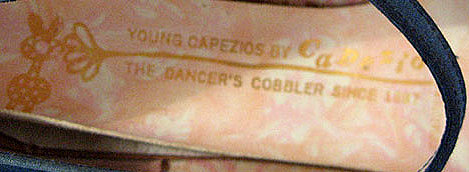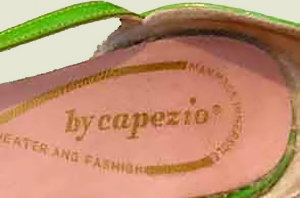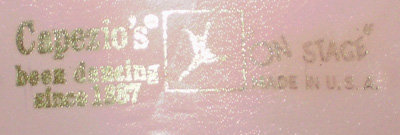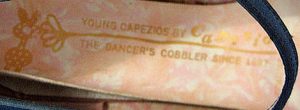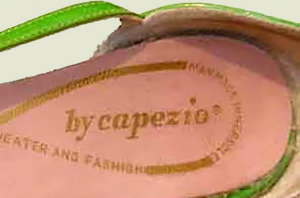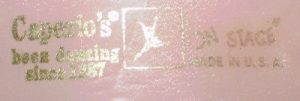Salvatore Capezio (1871-1940) was born in Bruno Lucania Potenza, Italy. When he immigrated to New York he had already trained as a cobbler. At the age of 17 he opened his first shop, called The Theatrical and Historical Shoemaker, located near the Metropolitan Opera House. He began by repairing shoes for the performers, but after making a pair of shoes for one of the dancers he began specializing in dance shoes.
When he married Angelina Passone, a ballerina, his shop became a destination for dancers. In 1910 Anna Pavlova visited the shop and had Capezio make shoes for her and her entire company. In 1915 she wrote a letter saying that his shoes were “indeed the best I ever had.”
Aa a result of that endorsement the company’s business grew so much in the 1920s that Capezio hired many relatives to work for him. In 1920, a teenager named Ben Sommers joined the firm and became like a son to Capezio; he eventually became president of the company.
The firm not only made ballet shoes but also shoes for the Ziegfield Follies, the Radio City Music Hall Rockettes and jazz and broadway dancers. They also began making dance apparel.
In 1933 Capezio introduced the Teknik, a superior shoe that the company still sells. In 1934 a Hollywood store was opened, which broadened its market to include the film industry. By the end of the decade they were making a full line of dance/performance apparel & had also introduced a line of fashion shoes.
After Salvatore died in 1940 the company was run by his nephews Nicholas Terlizzi and Ted Nelson, along with Ben Sommers and Nick Callan. Capezio still primarily made dance and theater shoes, but after Claire McCardell showed her 1941 collection featuring their long-sole ballet shoe Capezios became popular with women who were not dancers. Major stores – including Bonwit Teller, Neiman Marcus, and Lord & Taylor – began selling Capezios. In 1949, Capezio was featured on the cover of Vogue. In 1952 the company won the Coty Award.
In the late 1950s and early 1960s the company began having internal problems & eventually sold its fashion line in 1964. In the 1970s, thanks to a new popularity for dance – due in large part to PBS dance shows and dance-related movies – Capezio again enjoyed robust sales and expanded its manufacturing to include lines for gymnasts and ballroom dancers.
It continued to grow in the 1980s and 1990s and, of course, is still in business today as Capezio/Ballet Makers Inc. Capezio has provided footwear to many notable Broadway shows and movies, as well as the Ringling Brothers, Barnum & Bailey Circus and Disney.
Famous Capezio customers include not only Pavlova, but also Fred Astaire, Gene Kelly, Sammy Davis Jr., Charles “Honi” Coles, Alicia Alonso, Bob Fosse, Mick Jagger, Liza Minelli, Gregory Hines, Tommy Tune, Ann Reinking, Debbie Allen, Ben Vereen, Charo, Merrill Ashley, Rob Marshall, Ashley Tuttle, Fatima, Savion Glover, Brian Friedman, Madonna, Gwen Stefani, Justin Timberlake, Britney Spears, Katy Perry and Lady Gaga.
Written by thespectrum

